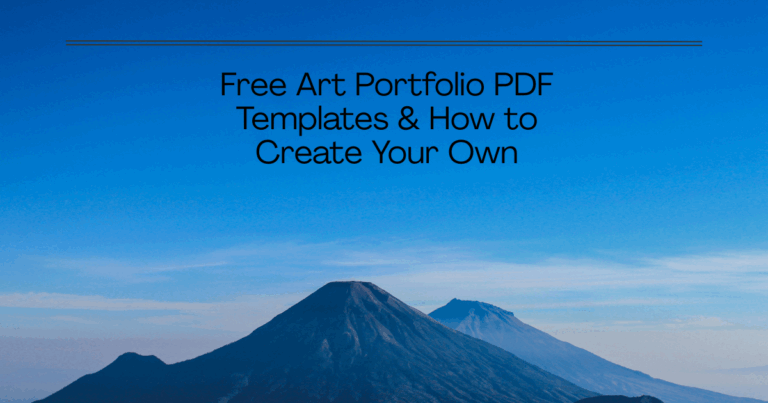Understanding Art Portfolio Binders: What Makes Them Different
Art portfolio binders are not your average office binders. Designed specifically for creative professionals, these binders are built to showcase, protect, and organize artwork in a way that reflects professionalism and precision. Whether you’re a student preparing for art school, a designer presenting client work, or a wholesaler sourcing premium presentation tools, understanding what sets portfolio binders apart is key.
Unlike regular binders, art portfolio binders feature high-capacity multi-ring systems that allow for secure insertion of refill pages or sheet protectors. This flexibility is especially valuable for users who need to add, rearrange, or update their work frequently. Many models are made from durable materials like polypropylene, PU leather, or nylon, offering protection against moisture, dust, and frequent handling—ideal for transport, exhibitions, and long-term storage.
Another key distinction lies in sizing. Portfolio binders are available in large and oversized formats like A3, A2, 11×17, or even 24×36 inches—formats rarely seen in standard stationery. For international buyers and OEM clients, this category offers opportunities to customize design features such as logo branding, extra pockets, or special sleeves.
Investing in the right binder not only protects your artwork but also enhances your professional image. It’s a smart choice for anyone serious about creative presentation and archiving.
Art Portfolio Binders vs. Standard Office Binders: Key Differences
At first glance, art portfolio binders may seem similar to standard office binders—but in reality, they serve completely different purposes and are built with distinct features in mind.
Office binders are designed primarily for documents, often limited to A4 or letter size, and focus on text organization. They typically use basic ring mechanisms and lightweight covers that suffice for paperwork, but offer little protection for visual content or oversized pages.
In contrast, art portfolio binders are made to store and display visual work—such as drawings, prints, photographs, and concept boards. These ring binders often come in larger formats like A3, 11×17, or even 24×36 inches, and are equipped with multi-ring systems that support heavyweight refill sleeves. The materials used—such as polypropylene, PU leather, or reinforced zipper—offer superior durability and protection from bending, moisture, and dust.
Furthermore, portfolio binders are presentation tools. Many include clear sheet protectors, inner pockets, and customizable covers to help artists and professionals showcase their work in a polished, organized way. For creative professionals, students, and design agencies, an art binder isn’t just for storage—it’s a part of the portfolio experience.
Choosing the right binder depends on your content. If you’re working with visual material that deserves protection and presentation, a standard office binder simply won’t do.
Why Multi-Ring Systems Are Ideal for Creative Professionals
For artists, designers, and illustrators, flexibility and organization are everything. Multi-ring systems in art portfolio binders provide exactly that. Unlike traditional spine or fixed-binding formats, a multi-ring design allows users to rearrange, remove, or insert pages with ease—perfect for a constantly evolving body of work.
This modularity is especially beneficial when preparing for client presentations, school applications, or exhibitions. You can tailor the order of artworks based on the audience, theme, or purpose—without damaging the binder or the pages. Whether you’re presenting high-resolution prints, original sketches, or layered mixed-media pieces, the multi-ring system supports various refill sleeves, making it suitable for diverse formats and media types.
International clients also appreciate the practical advantages in bulk usage. When used for branding or institutional presentations, the refillable design allows ongoing updates without the need to reorder new units—saving cost in the long run. Moreover, many of our multi-ring binders come with reinforced corners and spine protectors, ensuring that frequent page-turning doesn’t compromise the binder’s longevity or appearance.
Simply put, multi-ring binders provide both structure and freedom—two qualities that define great creative work.
Common Binder Materials: From Polypropylene to Faux Leather
When selecting an art portfolio binder, the materials used in its construction can make all the difference in durability, protection, and presentation. Most high-quality binders for artwork are made from polypropylene (poly), PU (faux leather), or nylon with oxford cloth backing—each offering unique benefits depending on the user’s needs.
Polypropylene is lightweight, water-resistant, and commonly used in presentation binders or storage books that need to be durable and economical. It’s ideal for bulk buyers and educational institutions. Faux leather or PU covers, often found on black portfolios or zipper closure binders, give a professional appearance suitable for client meetings and interviews.
Inside, most binders come equipped with clear plastic sleeves or sheet protectors, many of which are acid-free to prevent yellowing or degradation of original art. These sleeves often match standard formats like 8.5×11, 11 x 17, or 11×14 binders with sleeves, and can hold up to 24-pocket or 40 clear pocket capacities.
Choosing the right material not only affects aesthetics—it determines how well your art portfolio binder will protect and preserve your valuable work over time.
The Role of Portfolio Binders in the Creative Industry
How Artists, Designers, and Agencies Use Binders for Presentation
In today’s competitive creative industries, presentation matters just as much as the work itself. Art portfolio binders are widely used by artists, graphic designers, illustrators, and creative agencies to professionally display their work during interviews, client pitches, and portfolio reviews. A well-organized presentation binder with clear sheet protectors helps ensure that artwork is not only protected, but also easy to view and navigate. With multi-ring formats and customizable sleeves, these binders allow professionals to tailor each presentation based on the target audience or project—making a strong and lasting impression.
Portfolio Binders as a Tool for Long-Term Work Archiving
Beyond presentation, portfolio binders play a key role in preserving creative work over time. For both students and professionals, binders serve as a storage book—a physical archive of progress, process, and achievements. Using acid-free clear plastic sleeves, artists can protect original artwork, prints, or sketches from yellowing and wear. Available in sizes such as 8.5×11, 11 x 17, and 11×14 binders with sleeves, they’re perfect for keeping portfolios organized and safe for future reference or exhibitions. A durable binder becomes not just a storage tool, but a keepsake of your creative journey.
Essential Binder Features for Commercial and Academic Use
When choosing a binder for commercial or educational use, functionality and durability are key. Buyers should look for features like multi-ring mechanisms, reinforced spines, zipper closures, and compatibility with various page formats. In academic settings, teachers and students appreciate binders with 40 clear pockets or 24-pocket capacities to display assignments, reports, and original artwork. For businesses and institutions, a customizable portfolio folder or portfolio case with logo branding, extra compartments, or mounting paper sleeves enhances usability and professional appeal. These small details make a binder not just useful—but essential.
Choosing the Right Binder for Your Art and Business
Binder Size Guide: What Works for A3, 11×17, and Oversized Formats
Choosing the right binder size is crucial for protecting and presenting your artwork properly. Standard office formats like 8.5×11 may suffice for resumes or small prints, but artists and designers often work in larger dimensions such as A3, 11 x 17, or even 13 x 19. These formats require larger binders or presentation books designed specifically for creative use. Many art portfolio binders come with clear page protectors that accommodate these sizes, ensuring artworks don’t get folded or trimmed. Oversized options like 24-pocket binders are ideal for portfolio reviews, exhibitions, or archiving larger works.
Choosing the Right Ring Mechanism for Your Portfolio’s Purpose
The ring mechanism in a binder affects both usability and capacity. Multi-ring systems (such as 24-ring or 30-ring designs) are preferred for presentation binders, as they offer even page distribution, prevent warping, and allow for smooth page flipping. They’re compatible with refillable sheet protectors, making them a favorite among creative professionals who regularly update their content. On the other hand, standard 2- or 3-ring binders may be more suitable for short-term use or classroom settings. For high-end presentations or agency portfolios, always choose a ring binder that complements the format and volume of your work.
Why Material Quality Matters in Wholesale and OEM Production
For wholesalers and OEM clients, material quality isn’t just about appearance—it determines long-term value and customer satisfaction. High-grade polypropylene, reinforced oxford cloth, and PU (faux leather) covers ensure that each portfolio case or binder is built to withstand frequent use, travel, and storage. Especially in international shipments, durable construction helps protect the art portfolio case from damage and climate exposure. OEM buyers should also look for features like zipper closures, reinforced corners, or custom logos to elevate the product’s branding appeal. A premium build quality builds a premium reputation.
Organizing an Art Portfolio Binder Like a Pro
Best Practices for Arranging Works to Impress Clients or Judges
A well-organized art portfolio binder can make the difference between a good impression and a memorable one. Start by curating your strongest pieces—lead with impact and end with depth. Group similar styles or themes together for a cohesive narrative, whether it’s for a gallery review, client pitch, or school application. Use acid-free sheet protectors or page protectors to maintain clarity and keep artworks in pristine condition. Avoid overcrowding each page; give each piece space to breathe, allowing judges or clients to fully absorb your work without distraction. Quality over quantity always wins in visual storytelling.
How to Integrate Title Pages, Statements, or Brand Inserts
Beyond the artwork, adding context enhances professionalism. Begin your portfolio folder with a custom title page or branded cover insert. A short artist statement or creative bio provides insight into your background and process. For agency portfolios or OEM clients, brand inserts and printed project descriptions help align with corporate expectations. These front matter pages act like a visual résumé—making your work not only beautiful but strategic. You can also include project titles or brief captions on each sleeve using adhesive labels or printed overlays, especially in a presentation book for commercial review.
Using Tabs, Refill Sleeves, and Index Dividers for Navigation
Navigation is key, especially when your binder contains multiple series or mediums. Use index dividers, refill sleeves, or color-coded tabs to clearly separate sections—whether by year, project, medium, or style. This structure helps viewers quickly locate the work most relevant to them. For portfolios with 40 clear pockets or multi-ring formats, organizing becomes even more essential. Refillable pages offer flexibility as you evolve your body of work, while labeled tabs elevate the user experience and add a level of polish often seen in top-tier presentations.
Top-Selling Art Portfolio Binders for International Buyers
Binder Styles That Resonate in the US, EU, and Asia-Pacific Markets
Different regions have distinct preferences when it comes to art presentation. In the United States, buyers often prefer black portfolios with zipper closures for a sleek, professional look—suitable for interviews, college reviews, or gallery pitches. The EU market tends to lean toward minimalist aesthetics with eco-conscious materials, such as poly or recycled kraft-based presentation books. In contrast, Asia-Pacific markets, particularly Japan and South Korea, often favor lightweight, slim designs like Itoya Art Profolio-style binders, prized for their clean layout and ease of use in academic settings. Understanding these regional trends is key when developing or sourcing the right art portfolio binder for global buyers.
OEM-Friendly Features: Custom Branding, Extra Pockets, Logo Printing
For international distributors and OEM clients, portfolio binders become even more valuable when they can be customized. Features like logo printing, custom inner pockets, or personalized front covers allow resellers to align the product with their branding. Add-ons such as card holders, pen loops, or even built-in document sleeves create additional selling points. Binders with 24-pocket or 40-pocket configurations are especially popular for school and business use, while stitched or embossed logos elevate the premium feel. Offering customizable options gives OEM buyers a competitive edge in their local market—and helps you stand out as a manufacturer.
Comparing Wholesale Prices vs. Retail Models ??What to Expect
When sourcing art portfolio cases internationally, it’s important to understand the pricing dynamics between wholesale and retail. Wholesale models are typically sold in bulk (MOQ of 500–1000 units), with pricing influenced by materials, customization, and packing method. For example, a standard multi-ring binder made from polypropylene will be more affordable than a PU leather case with zipper and custom branding. While retail buyers may pay up to 3x the factory price, wholesalers benefit from negotiated pricing based on volume, shipping method, and destination. Smart buyers focus on long-term supplier relationships and consistent quality to maintain margins.
Maintaining Your Portfolio Binder for Long-Term Use
Cleaning Tips for PP, PU, and Fabric Binders
Keeping your art portfolio binder clean not only preserves its appearance but also extends its lifespan. For polypropylene (PP) binders, a simple wipe with a damp microfiber cloth is often enough. Avoid harsh solvents that could cause the plastic to warp or fade. PU (faux leather) binders benefit from gentle leather-safe wipes or diluted soap water, especially on embossed logos or zippered edges. For fabric or oxford cloth surfaces, use a soft brush or a lightly dampened cloth to lift dust and stains—never soak the fabric, as this can weaken the seams or padding. Regular cleaning prevents mold, discoloration, and unpleasant odors, especially if the binder is used in humid or high-traffic environments.
How to Store Your Binder in Varying Climates or Humid Environments
Proper storage is essential for maintaining your presentation binder and the artwork inside. In humid climates, always store binders upright in a well-ventilated, temperature-controlled space. Avoid stacking binders horizontally for long periods, as pressure may distort covers or sleeves. Use moisture absorbers or silica gel packs when storing multiple portfolio folders together. For dry or cold areas, avoid placing binders near heaters or windows, as extreme temperatures can cause materials like PU leather to crack or become brittle. Keeping your binder in a protective storage book box or soft bag also adds an extra layer of defense.
Protecting Internal Pages and Sleeves from Damage
Your binder’s exterior is important, but the real value lies in preserving what’s inside. Always use acid-free page protectors or clear plastic sleeves to guard against yellowing, smudging, or bending. Avoid overloading each sleeve—while some presentation books offer 24-pocket or 48-page capacities, leaving a bit of breathing space ensures easier flipping and less stress on the rings. Insert artworks with a backing board or mounting paper for added rigidity, especially when showcasing original pieces. Finally, avoid handling pages with dirty or oily hands. Clean presentation protects your art—and your reputation.
Conclusion: Why Professionals Choose Quality Binders
For creatives, students, and industry buyers alike, investing in a high-quality art portfolio binder is more than a purchase—it’s a statement. A well-made binder reflects the care and professionalism behind the work it carries, whether you’re presenting in a client meeting, shipping internationally, or applying to an art school. Features like multi-ring capacity, acid-free sheet protectors, zipper closures, and durable materials (such as PU or poly) directly affect how your portfolio is received—and preserved.
For OEM buyers and wholesalers, choosing a reliable supplier with customizable options ensures that your brand or business stands out in a competitive market. In short, the right binder doesn’t just store your work—it elevates it.
👉Ready to protect your art like a pro? Explore our selection of the best art portfolios and portfolio cases today and give your art the care it deserves!
- Suggested Reading :
Art Portfolio: Display Book, Binder, & Presentation Portfolio
- Related Post:
- For more details, check out :
Best Digital vs. Physical Art Portfolio and Portfolio Case: How to Make the Right Choice




